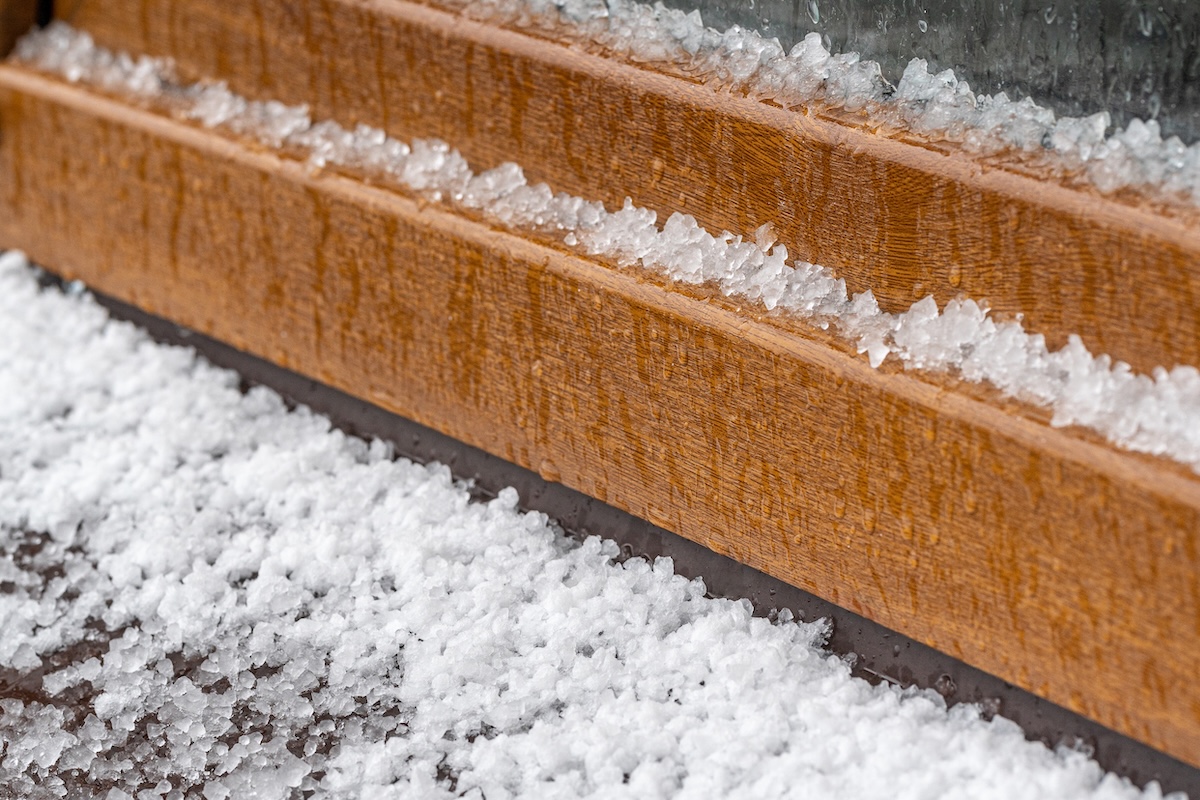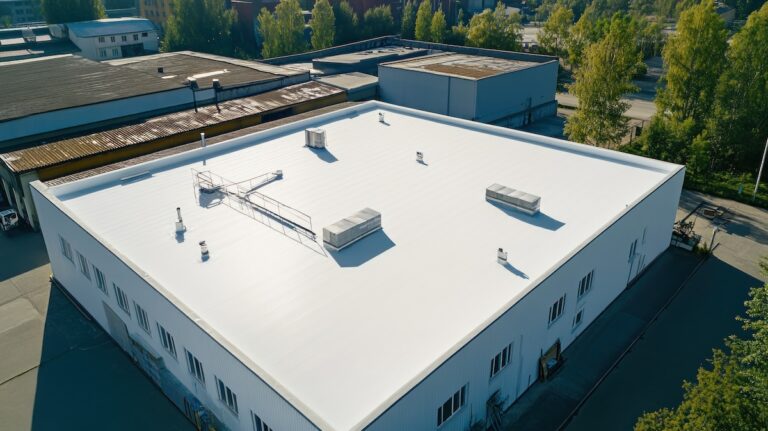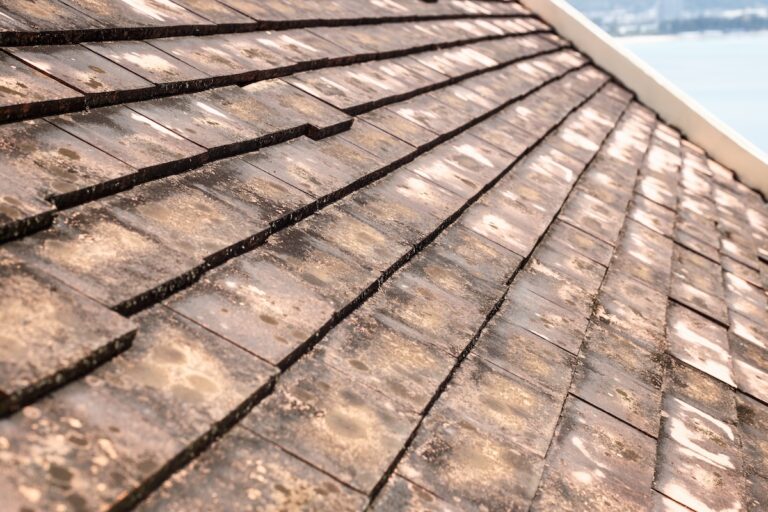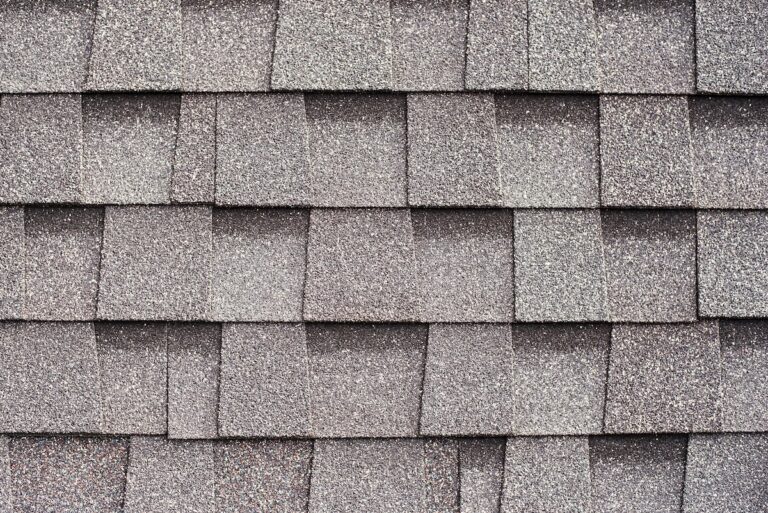Hailstorms can wreak havoc on any roofing system, but flat roof hail damage comes with its own unique set of challenges. Whether you own a commercial property or manage multiple buildings, hail damage can compromise the structural integrity of your flat roof, lead to expensive repairs, and leave your property vulnerable to further issues like leaks or insulation damage. Knowing what steps to take after a hailstorm is critical to protecting your investment and ensuring your roofing system stays in optimal shape. Here are just a few reasons why addressing hail damage promptly is essential:
- Hail can damage roofing materials, including metal roofs or membrane systems, weakening their durability.
- Unaddressed flat roof hail damage can lead to water leaks, mold growth, and even structural damage to your building.
- A thorough roof inspection can often catch hidden issues that may not be visible to the untrained eye.
If your commercial flat roof has recently withstood a hailstorm, this guide is for you. We’ll explain the next steps to take to ensure your roofing system recovers effectively and stays ready to perform in the future. 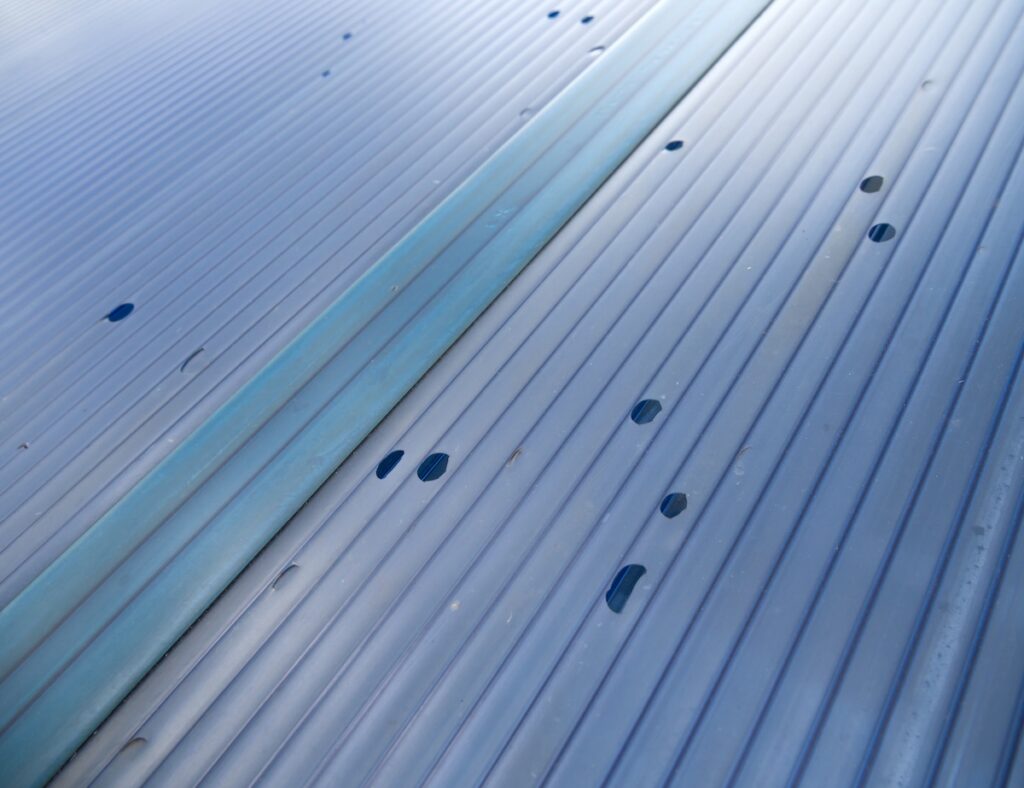
Step 1: 🔍 Assess the Situation
Hail damage isn’t always immediately obvious, especially on flat roofs. That’s why the first step is conducting a preliminary assessment to understand the extent of the storm’s impact.
Check for Visible Signs of Damage
Walk around the exterior of your property and look for visible signs of flat roof hail damage. This can include dents, cracks, or punctures in the roofing materials. If your property has metal roofs, check for dents and warping that may weaken the material over time. Also, look for signs like pooling water, which can indicate that the hailstorm impacted the drainage system of your flat roof. Water that fails to drain properly can lead to excessive wear and tear on the roofing system.
Inspect Adjacent Areas
Hailstorms can do more than just cause direct damage to the roof itself. Inspect surrounding areas such as gutters, downspouts, and HVAC units that may have also been impacted. Damaged accessories can indicate the intensity of the storm and help determine what to look for during a full roof inspection.
Step 2: 📸 Document the Damage
Once you’ve identified potential issues, it’s essential to document the extent of flat roof hail damage to provide a clear record of the storm’s impact. Proper documentation will be incredibly useful for insurance claims and future commercial roof repairs.
Take Photos
Capture close-up and wide-view photos of any visible hail damage, including cracks, dents, or tears in the roofing materials. Be particularly thorough when documenting damage to vulnerable areas like seams, edges, and flashing.
Keep Notes
Write down your observations, such as the date and time of the hailstorm, the size of the hail (if known), and any noticeable changes in the condition of your roof or property. Include every detail, as this information can bolster your case when filing an insurance claim. 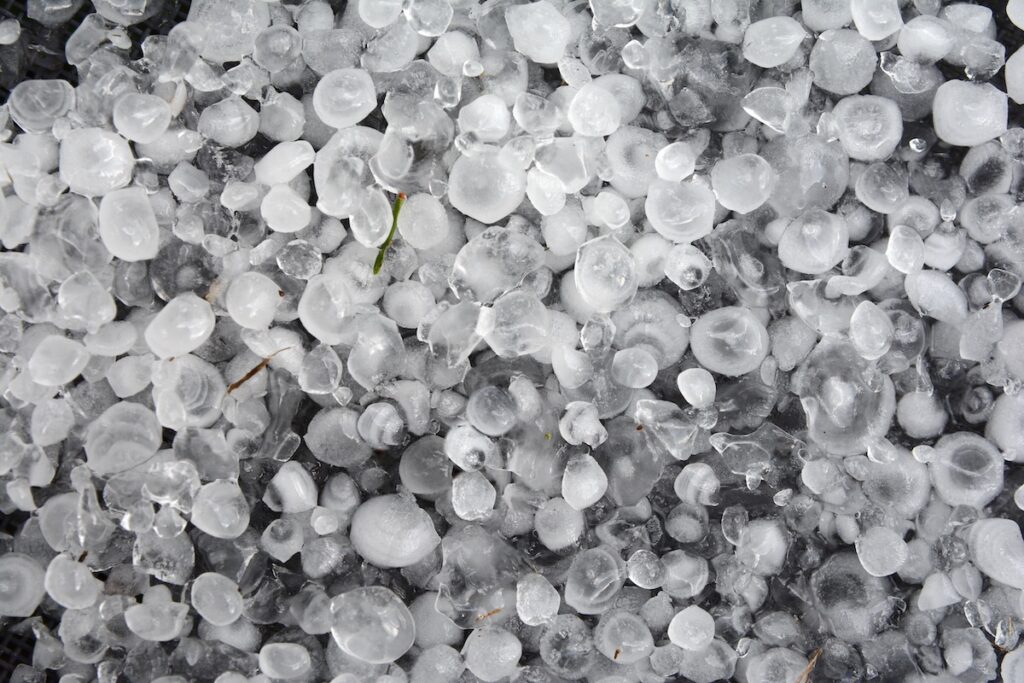
Step 3: 🗓️ Schedule a Professional Roof Inspection
While a preliminary assessment can give you a general idea of the damage, a professional roof inspection is crucial to uncover issues that aren’t visible to the untrained eye.
Why You Need a Professional Roof Inspection
Hailstorms can cause hidden damage beneath the surface of your flat roof that may go unnoticed until it leads to more significant problems. A professional roofing inspector will carefully examine the entire roofing system, looking for issues such as weakened membrane materials, structural damage, or compromised insulation layers. Expert roofers also have the tools and expertise needed to detect subtle signs of damage, such as small punctures that could eventually cause leaks.
Choosing the Right Inspector
Ensure that the company or individual conducting the inspection is licensed, experienced with flat roofs, and understands the specific challenges posed by hail damage. At G. Cannon, we specialize in flat roof hail damage and have years of experience working on both commercial and residential properties.
Step 4: 🗃️ File an Insurance Claim
If your roof inspection confirms significant hail damage, the next step is to file an insurance claim to cover the cost of repairs or replacement.
Work with Your Roofing Contractor
A seasoned commercial roofing contractor can help you throughout the process of filing an insurance claim. At G. Cannon, we provide detailed reports of your roof inspection findings, including photos and technical details that insurance adjusters require. This ensures a smoother claims process and increases the chances of receiving the coverage you need.
Understand Your Policy
Review your insurance policy to understand what is covered and any potential exclusions related to flat roof hail damage. Be aware of your deductible and ensure you communicate every detail about the damage to your insurer.
Stay Organized
Keep all documents, correspondences, and reports related to your hail damage claim organized. This will help ensure that you meet deadlines and provide the required information to expedite the claims process.
Step 5: 🛠️ Plan for Repairs or Replacement
After securing approval for your claim, it’s time to address the hail damage and restore your flat roof.
Address Urgent Repairs First
If the hailstorm caused immediate issues like leaks, prioritize repairs to prevent further damage to the interior or structure of the building. Your roofing contractor will typically address these problems first while creating a more comprehensive repair plan for long-term fixes.
Long-Term Solutions
Depending on the extent of the damage, your flat roof may require partial repairs or a complete replacement. Repair options often include patching holes, fixing membrane seams, and replacing damaged flashing. If the hail damage is extensive, replacing the roof may be the more cost-effective solution in the long run.
Prevent Future Damage
While repairing or replacing your flat roof, consider implementing measures to prevent future hail damage. This may include installing impact-resistant materials, upgrading drainage systems, or scheduling regular maintenance to keep your roofing system in top condition.
🔑 Key Steps for Managing Flat Roof Hail Damage
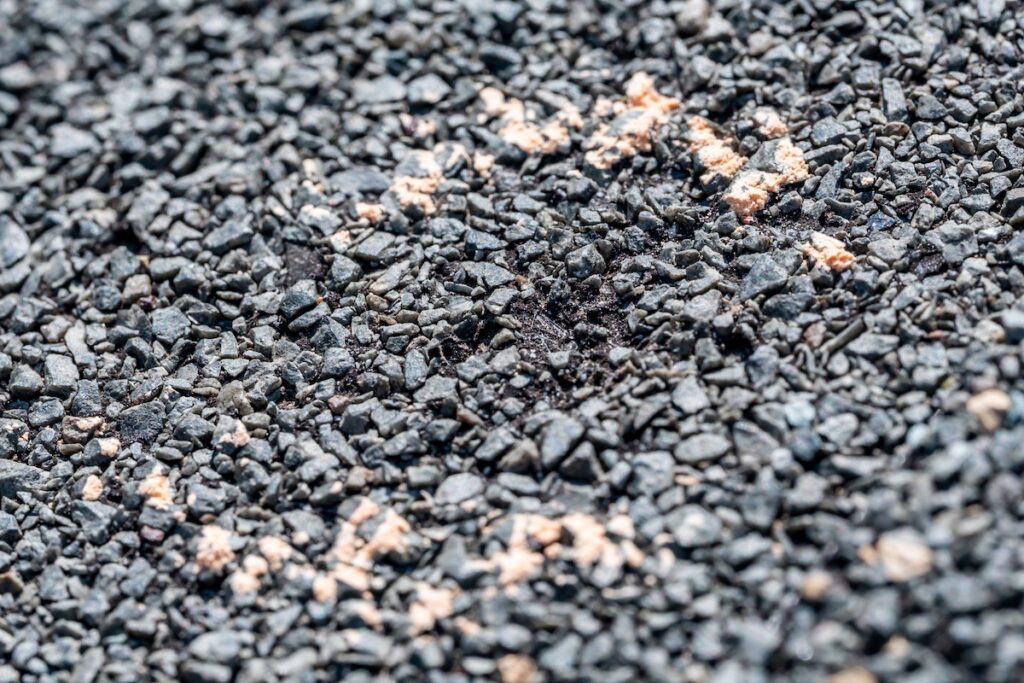
- Step Back and Inspect: Take a preliminary look at the roof yourself to spot visible hail damage like dents, tears, or pooling water.
- Avoid Rushing: Don’t attempt to fix visible cracks or pooling yourself unless your experience matches commercial-roofing best practices. (It won’t!)
- Measuring Leakage: Mark leakage points rather than estimating its severity for walkups today or estimates due this weekend.
- Schedule your Professional Inspections: This one intro step requests a 15-minute appt approval next week without rebuild delay/session placement probs!
Trust G. Cannon for All Your Roofing Needs
Addressing flat roof hail damage may seem daunting, but with G. Cannon on your side, the process couldn’t be easier. Our team of experienced roofing professionals understands the unique challenges of commercial roofs and knows how to restore your property quickly and effectively. With a proven track record of delivering high-quality roofing solutions, we’re the team you can rely on to get the job done right the first time. From thorough roof inspections to expert repairs and replacements, we’ll help protect your investment and keep your building in top condition. Don’t wait until it’s too late.
Contact G. Cannon today and take the next step toward securing your commercial property. Call us or visit our website to learn more!
